Inclusion scholars bring attention to health equity issues
While progress has been made to improve health equity, more needs to be done on many fronts, from medical education to patient care. That was a key message delivered by the Ohio University Heritage College of Osteopathic Medicine Inclusion Scholars in a research presentation.
As part of the Inclusion Scholars program for first- and second-year students, participants design a small research project and annually, share their findings. This year’s scholars looked at challenges faced by LGBTQ+ patients in health care settings, the ability of medical students to identify skin diseases and conditions on different skin tones, challenges facing inclusion in medical education, the development of a high school mentorship program and implementation of an affinity group for Black men in medical school.
“The inclusion scholar’s program is so valuable to participating students. The experience provides first and second years with an opportunity to delve deep into research and a literature review on a topic of their choosing relevant to equity in medicine or medical education,” said Tanisha King, chief inclusion officer. “Scholars enhance the knowledge of our faculty, staff and students often inspiring and influencing positive change.”
Increasing inclusivity in medical training materials
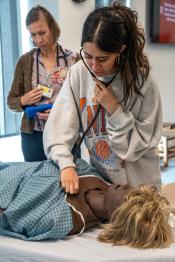
That was the goal of second-year student Alyson Johnson.
For her project, Johnson surveyed medical students to see if they could identify skin conditions on various skin tones. Most medical education materials only show skin conditions on lighter skin, but diseases often look different on darker skin.
This, Johnson noted, can lead to misdiagnosis. She used skin cancer as an example. Most dermatologists have little to no experience diagnosing skin cancer on people with darker skin tones, so it’s often discovered at a late stage when it’s harder to treat, making it more likely the patient will die from skin cancer. She told a story about her own mother’s misdiagnosis of a spot on her face that turned out to be basal cell carcinoma.
“The bottom line is there is a lack of diversity in medical education texts and lectures,” she said.
In her IRB approved study, medical students were asked to look at images of dark and light skin with 10 common skin conditions and make a diagnosis. Next, they indicated how confident they were in that diagnosis. Johnson said while students performed well overall, preliminary results showed they also did not have much confidence in their diagnosis of conditions on darker skin.
Johnson said she hopes data from her study can be used to “lead us forward in the right direction.
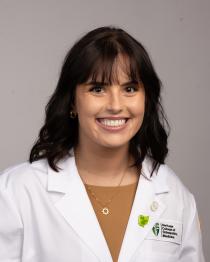
Improving health outcomes
In her presentation, Inclusion Scholar Caitlin Pastor, a first-year student on the Cleveland campus, said she has witnessed first-hand how a lack of inclusivity and respect can lead to poor treatment of patients. Pastor looked at LGBTQ+ patient care, and shared details about a patient and her mother who left a practice because the provider would not use the patient’s pronouns or new name.
Pastor held a training for clinical staff to raise more awareness about the significance of pronouns and its effect on the patient/provider relationship. She pointed out that a strong relationship between a doctor and their patient will lead to better health outcomes.
“A considerable number of people won’t go to a provider because of concerns about how they’re treated,” said Pastor. She pointed out that on her first day of classes, instructors emphasized the patient/physician relationship and told students to leave their biases at the door.
“All patients deserve your best holistic care,” she said.
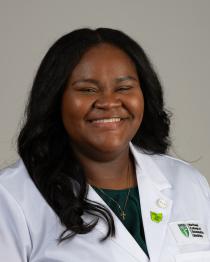
Broadening representation to enhance a sense of belonging
Many incoming medical students say they were inspired to pursue a career in medicine by someone they’ve met who works in health care. That was the case with Inclusion Scholar Jacee Moore, OMS I, who was introduced to medicine by her pediatrician, Jacqueline Moore (no relation).
“She served as a constant reminder that I could do anything that I wanted to do at a young age,” said Moore. “And seeing her being a black woman in medicine, seeing her name on a plaque that said Dr. J. Moore…I wouldn’t be future Dr. Moore if there wasn’t a Dr. Moore already.”
For her project, Moore conducted a survey of medical students to better understand their motivations for pursuing a career in medicine and the barriers they have faced along the way.
During her presentation, Moore made the point that some people may not ever meet a physician who looks like them or shares their background or culture.
“Luckily for me I was able to have that exposure, earlier, before my career even started, but I know for some people that’s not the case,” she said.
When students who are underrepresented in medicine (URM) attend medical school, they often have a low sense of belonging or don’t feel they belong at all. This was one of Moore’s findings. Many students also reported facing barriers, such as a lack of mentorship (12%), instances of bias or discrimination (12%), overall lack of diversity (26%) and financial hardship (28%) in medical school. However, a large number of the survey’s overall respondents felt a strong interest in academic medicine and a desire to lead the next generation of providers and train them to be culturally competent physicians.
In her presentation, Moore said it was important to get in front of young people from URM groups and let them know that a career in medicine is possible. To improve inclusion efforts, she recommended several other steps including hiring and retaining more diverse faculty.
“This call to action is one that is near my heart being a student of an underrepresented minority group in medical school,” said Moore. “By increasing diversity and inclusion within medical education, I believe we are one step closer to providing a community of doctors who look like the patient populations we intend to serve, and we take a great step closer towards equitable, culturally competent patient centered care that our patients deserve.”
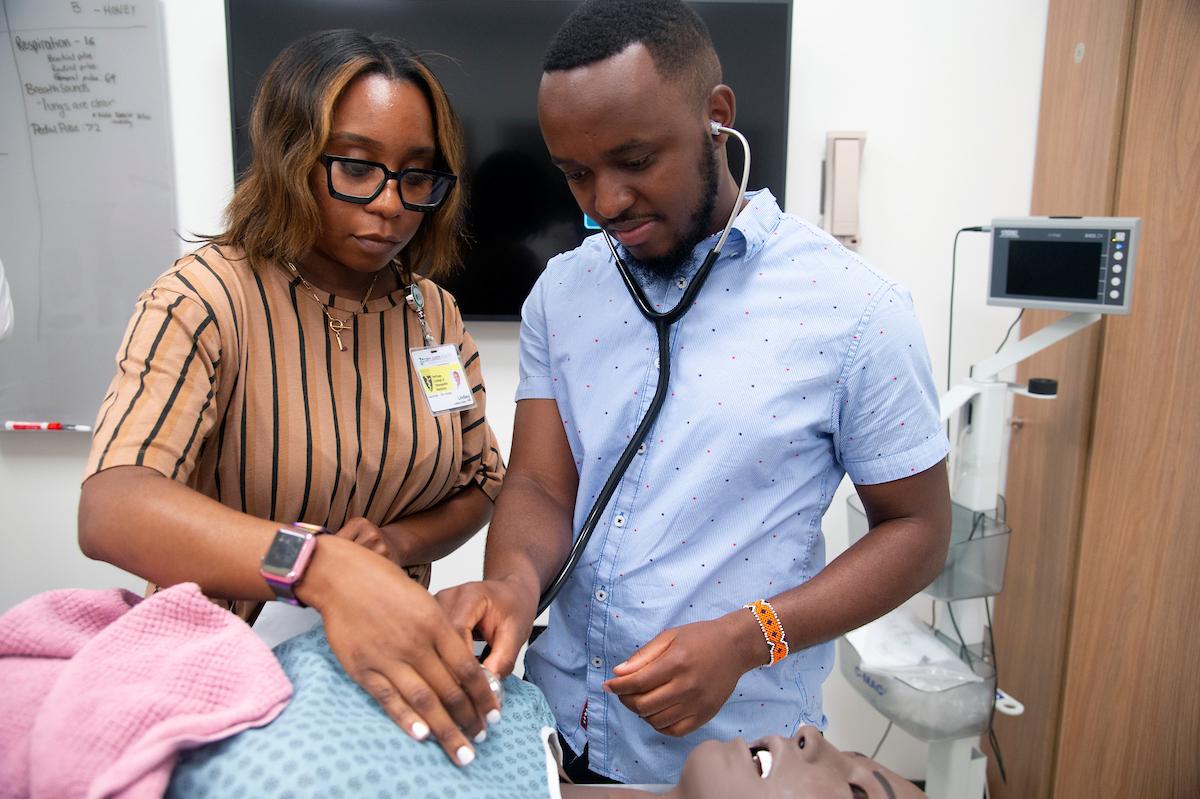
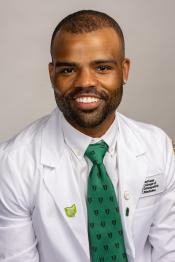
Building pipelines that help medical school recruitment
Inclusion Scholar Alcario Williams’ idea of creating a pipeline program for URM students from high schools and community colleges blossomed as he thought about where he was raised and his journey to medical school.
“I believe increasing diversity in medicine helps address these health care disparities by tailoring care to different populations,” said Williams. “So more representation leads to more physicians who understand and are aware of these varied patient experiences that these patients come in with, and these doctors can serve in these diverse communities which I believe leads to better health outcomes.”
Through the pipeline program, prospective students would partner with mentors who can guide them on their journey to medical school, from preparing for the MCAT to offering shadowing opportunities.
“We want to help these students who qualify for medical school but may be disadvantaged economically and/or socially find their path into medicine,” said Williams.
He explained how he faced what’s called academic redlining, where academic metrics can keep qualified applicants from underrepresented backgrounds from entering medical school. Redlining is a historical practice that isolates neighborhoods often based on race or ethnicity and then denies economic opportunities and other services to that community. Academic redlining is an extension of this concept as students in these communities often attend schools with significantly less funding and resources than schools in wealthier districts. Students in these neighborhoods usually face other barriers, such as inadequate housing, difficulty accessing health care and food deserts, which can affect their education.
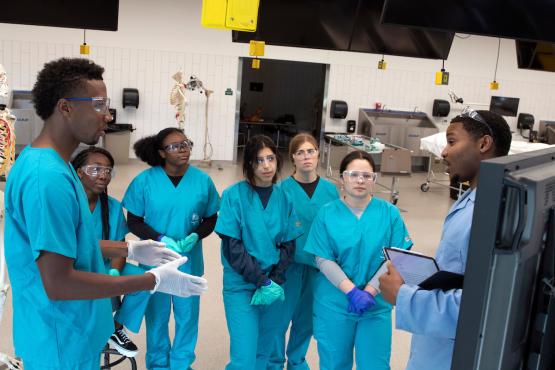
The Heritage College currently offers several programs that help reduce barriers to medical school, including Medical Student for a Day, a program where university students get exposure to a day in the life of a medical student. Williams said he participated in that program three times.
“Each time I learned something new from it, but I also saw the representation, and I gained that confidence over time that I can really do this,” he said.
Other programs the college offers include Summer Scholars and Pre-Matriculation, which Williams calls, “so impactful, so powerful, so influential,” and says he owes his success in medical school to them. Summer Scholars is a rigorous five-week immersive program that gives participants a realistic introduction to the first year of medical school. The Pre-matriculation program is an accelerated introduction to medical school.
Williams sees his pipeline program integrating with these. He said he wants to bridge the gap between underrepresented students and patients.
“If I can help more students who look like me get into medical school… that’s what I’m doing it for,” said Williams who hopes he can be the same kind of doctor as the pediatrician who cared for him when he was a child.
Finding space to gather and connect
After seeing data showing that less than half of Black male applicants accepted to the Heritage College chose to attend, Inclusion Scholar Kendale Watson developed an affinity group for Black men at the college.
He spoke with applicants to better understand what was happening. They told him they didn’t see Black men on campus, that they only saw him.
Watson said, he felt his affinity group, the Medicine Equity and Diversity or M.E.D. program, would be a good way to bring Black men to the forefront so that incoming students could see them, not just hear about them.
Watson started M.E.D. to create a healthy social environment and safe space for Black men across all three campuses at the college to gather and connect with each other, and to help increase the number of Black male applicants and graduates at the college.
The program ran four weeks and included a weekly seminar with guest speakers, many of them alumni. It also provided fellowship for the group’s 17 participants.
“We were able to see each other in person for the first time as one group,” said Watson, adding that one alumnus who spoke to the group told members that it was the most Black men he had ever seen together at one time at the college.
By bringing in alumni, Watson hoped they would provide mentorship and knowledge and could share their medical school experiences.
“I believe that by fostering a sense of community and mentorship, we can enhance the experience on campus and contribute to long-term success for Black men at OUHCOM.”
To evaluate the group’s effectiveness, Watson conducted a pre- and post-survey. He found that the group was diverse with a handful having a physician in their family and less than half being first generation college students. He also discovered that two-thirds of students had a mentor, although for many of them, their mentor was not in their chosen specialty.
While most participants said they feel supported by the college, they said there are challenges. More diversity among the faculty, a larger number of Black male students and having networks of support were some of the recommendations participants gave for improving their medical school experience.
The students also reported feeling pressure to succeed as a Black male in medicine.
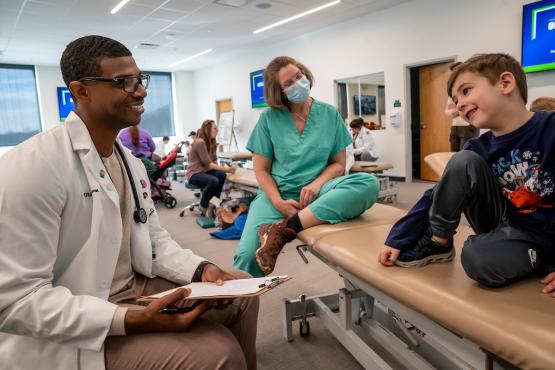
“It was an overwhelmingly yes from everyone,” said Watson. One participant said he felt he had to prove people wrong because they had been surprised he was going to be a doctor. Another said being the first in college and the first in medicine was both a drive and burden.
“I can relate to this personally… It’s a lot of pressure to go through this experience without having anyone who came before you,” said Watson. “You’re the first. So, navigating this experience can be very difficult.”
Watson also asked participants what they hoped to accomplish as a Black physician. One said he hoped to improve health outcomes in his community, remove stigma in health care, have a positive impact and become a trusted role model and leader in his community.
“I feel like that was the overwhelming response as well during the program, that everyone wants to be that pivotal role model for their community because there’s not a lot of people who look like us in this field, and it gives us a little bit of grit to keep continuing even if we do have setbacks,” said Watson.
Inclusion scholars are paired with either a faculty mentor or an assistant director of inclusion. They receive a stipend and are considered ambassadors for the Office of Inclusion, helping to facilitate dialogue on inclusion topics among their peers.
“What we’ve seen with the Inclusion Scholars program is that it increases student empathy as well as understanding of diversity, equity and inclusion and how broad it is,” said King. “This year’s scholars developed a strong bond and collaborated more with each other than we’ve seen in prior years.”
Information about how to apply can be found online.